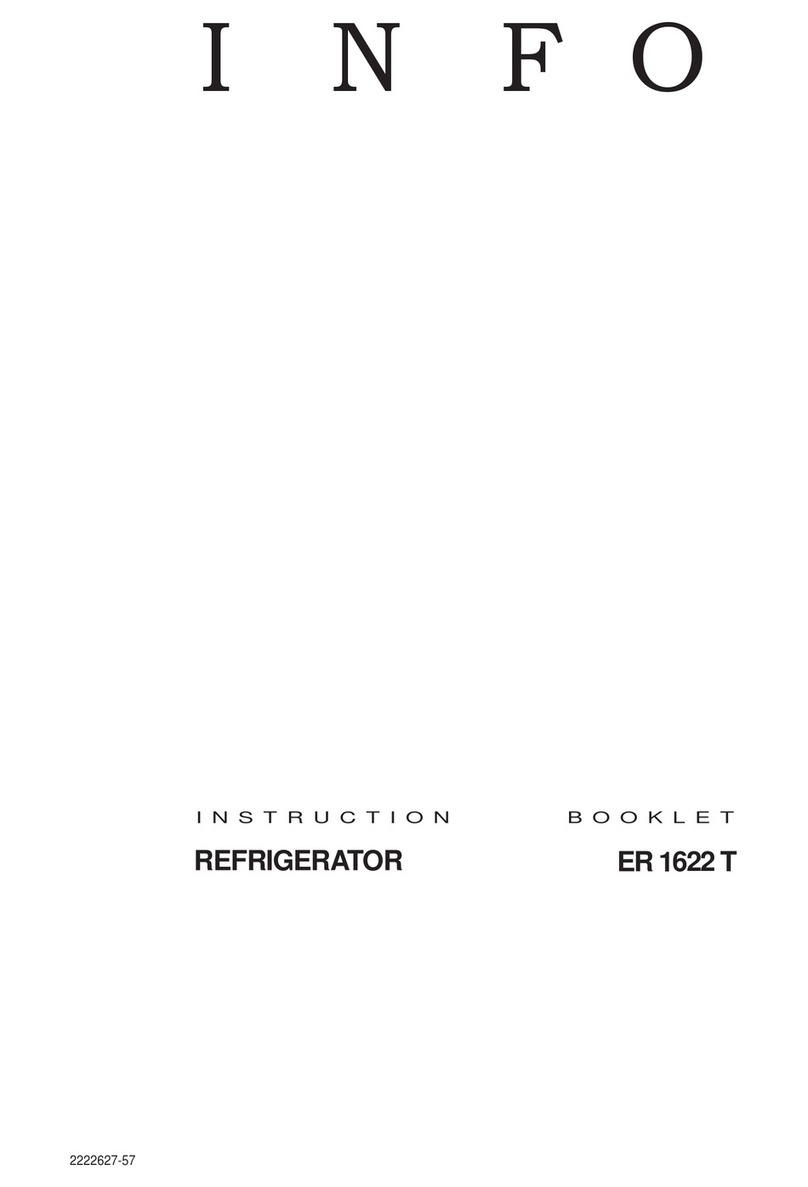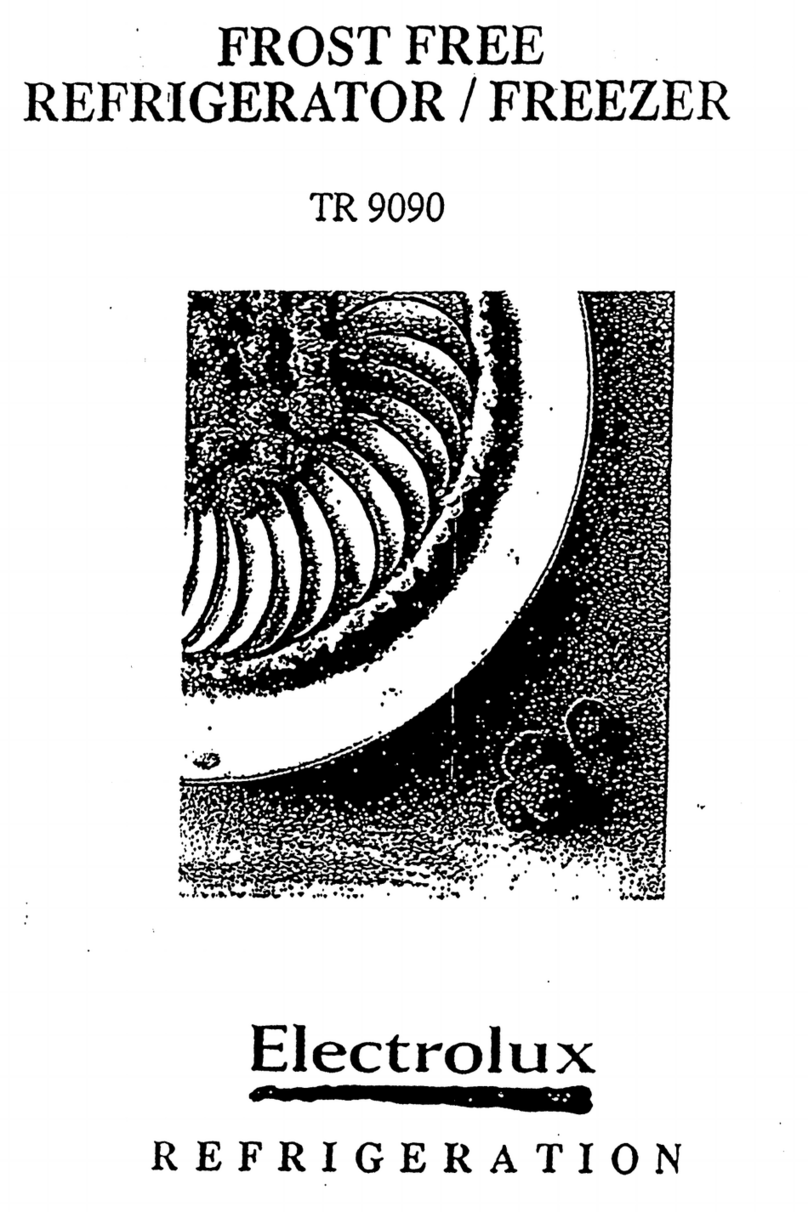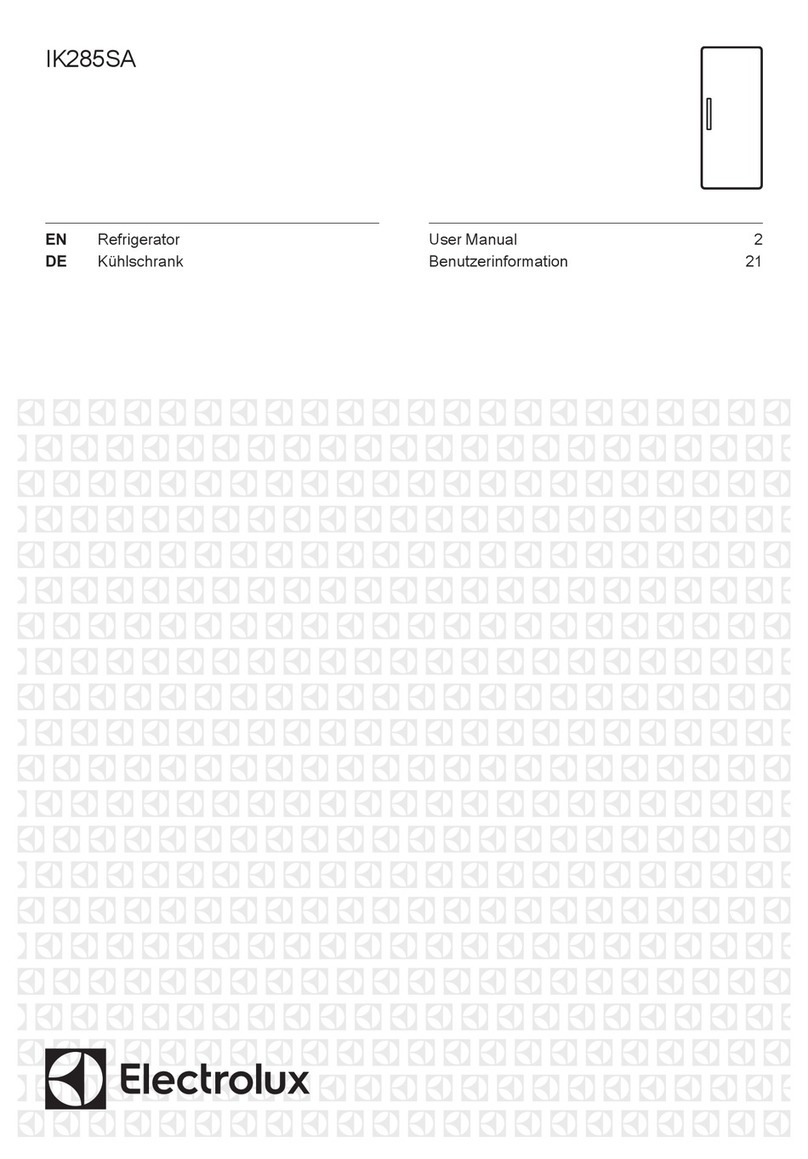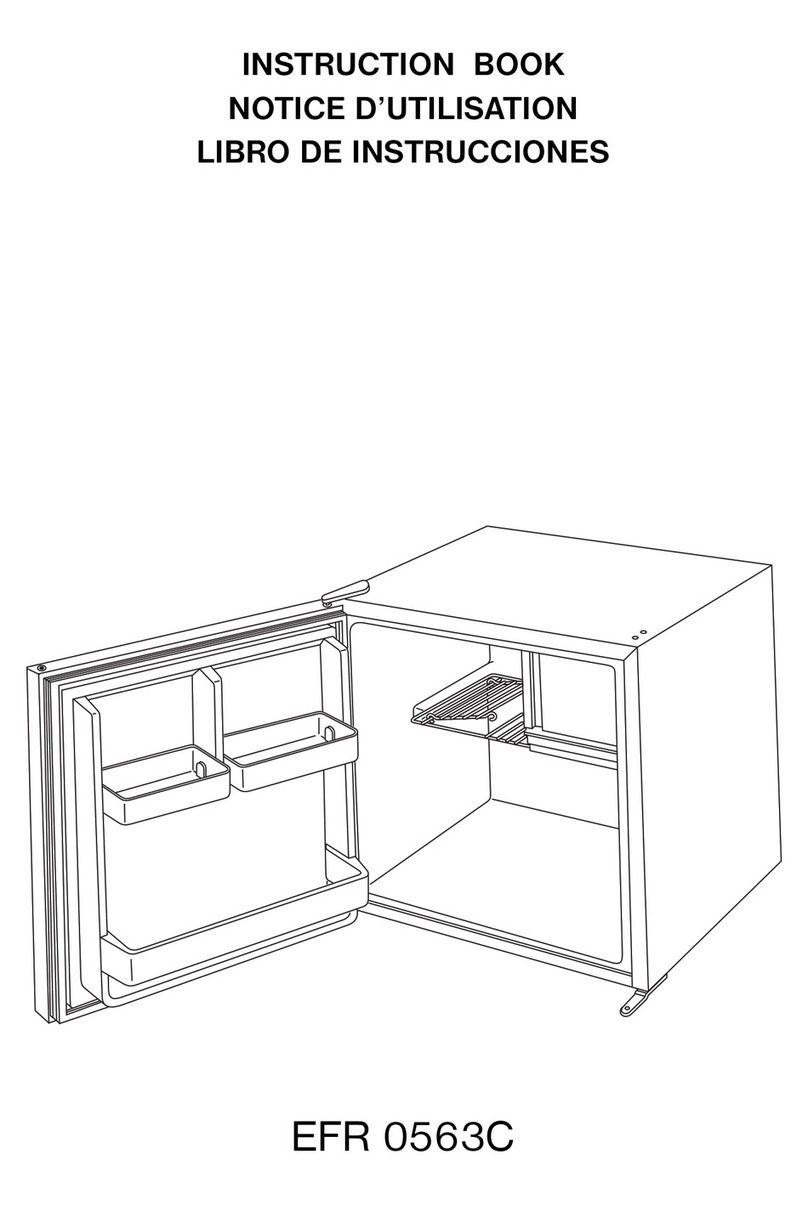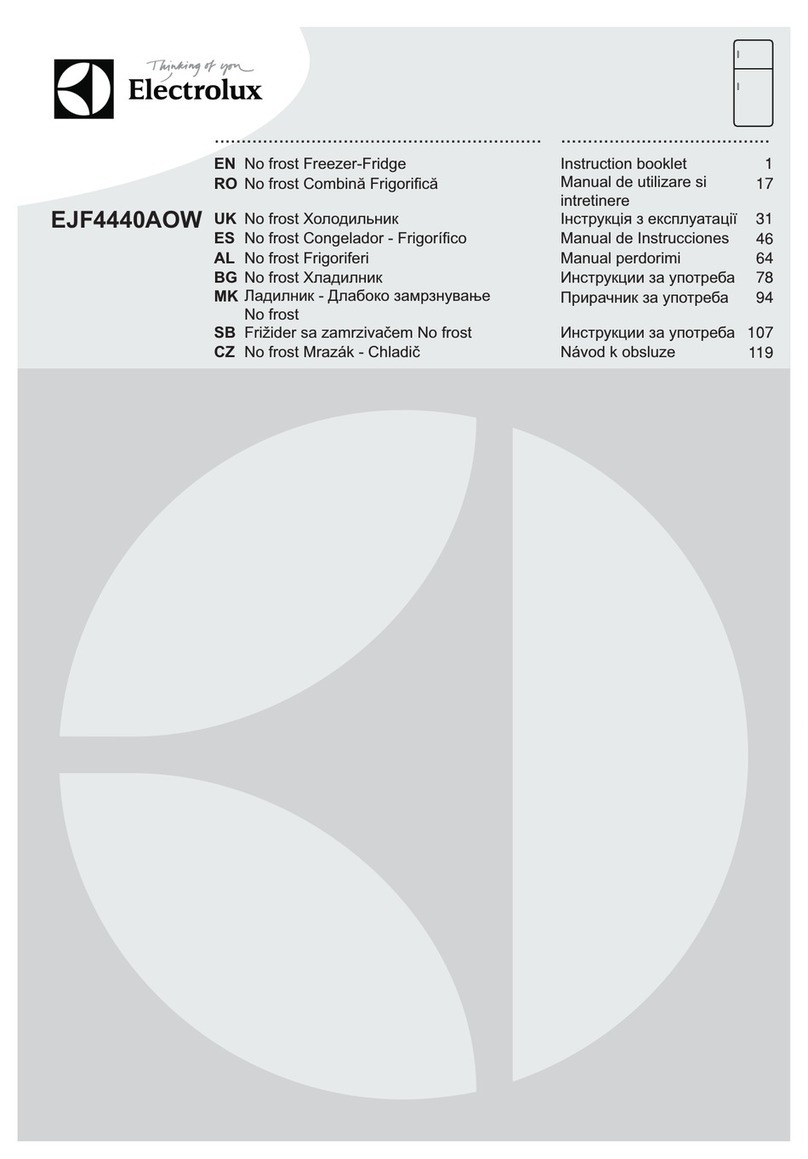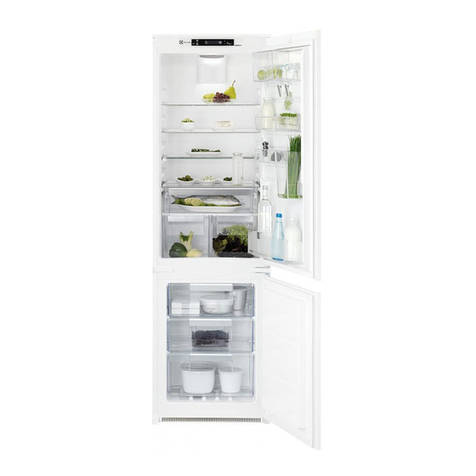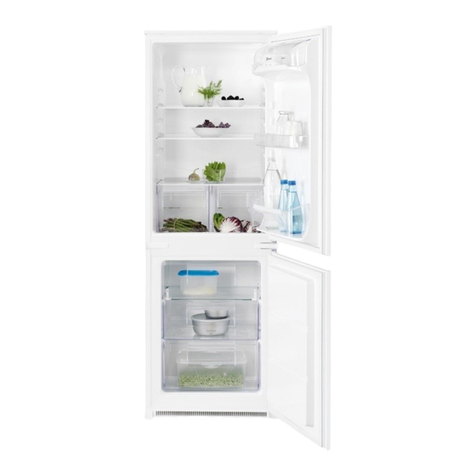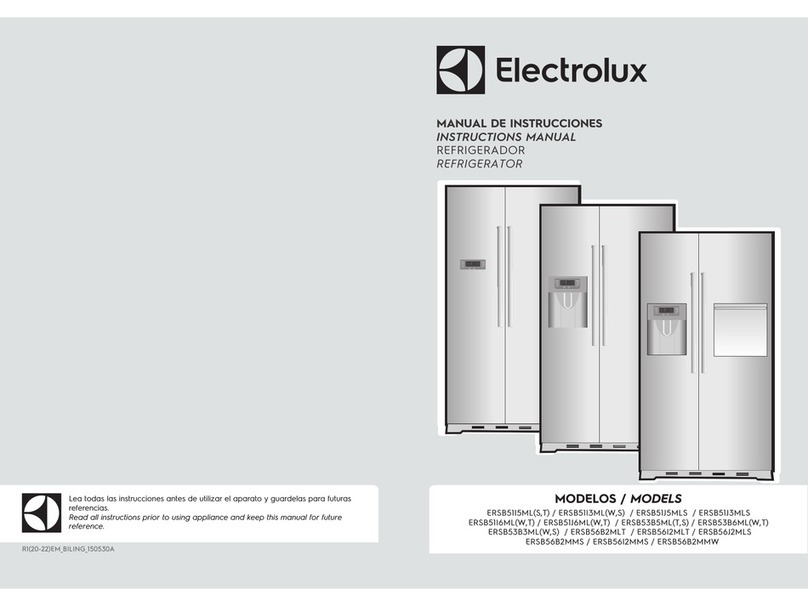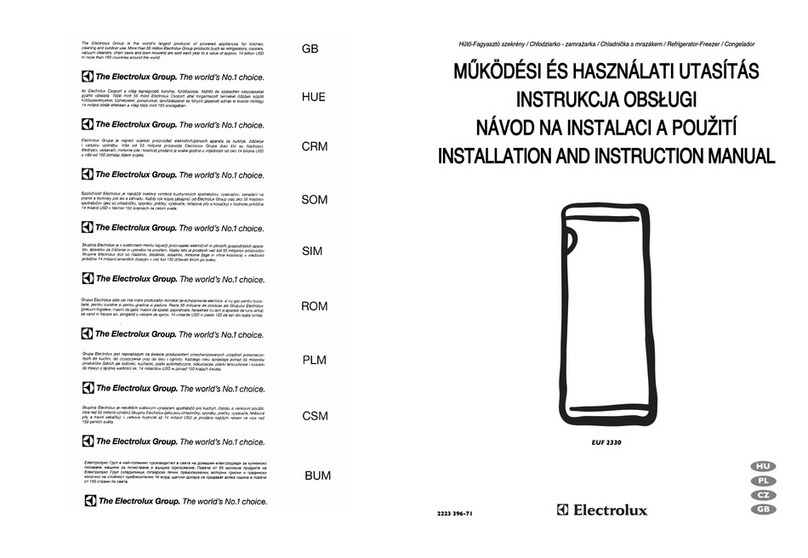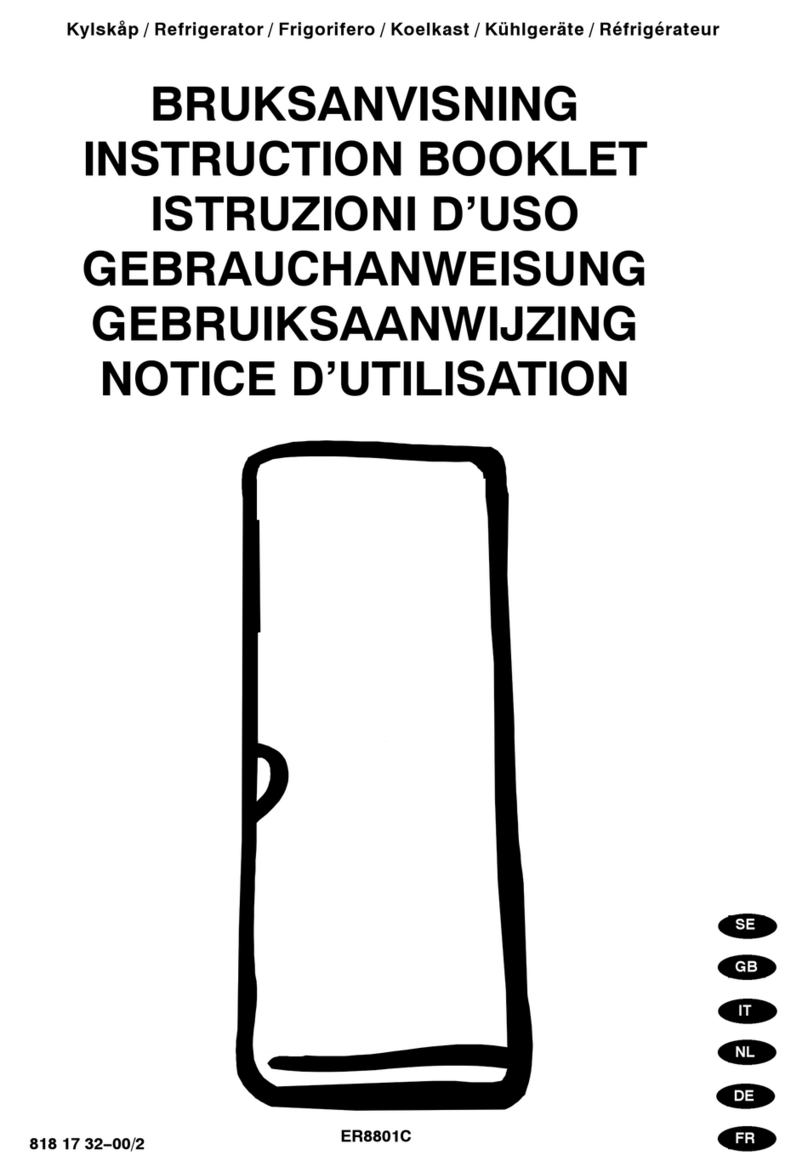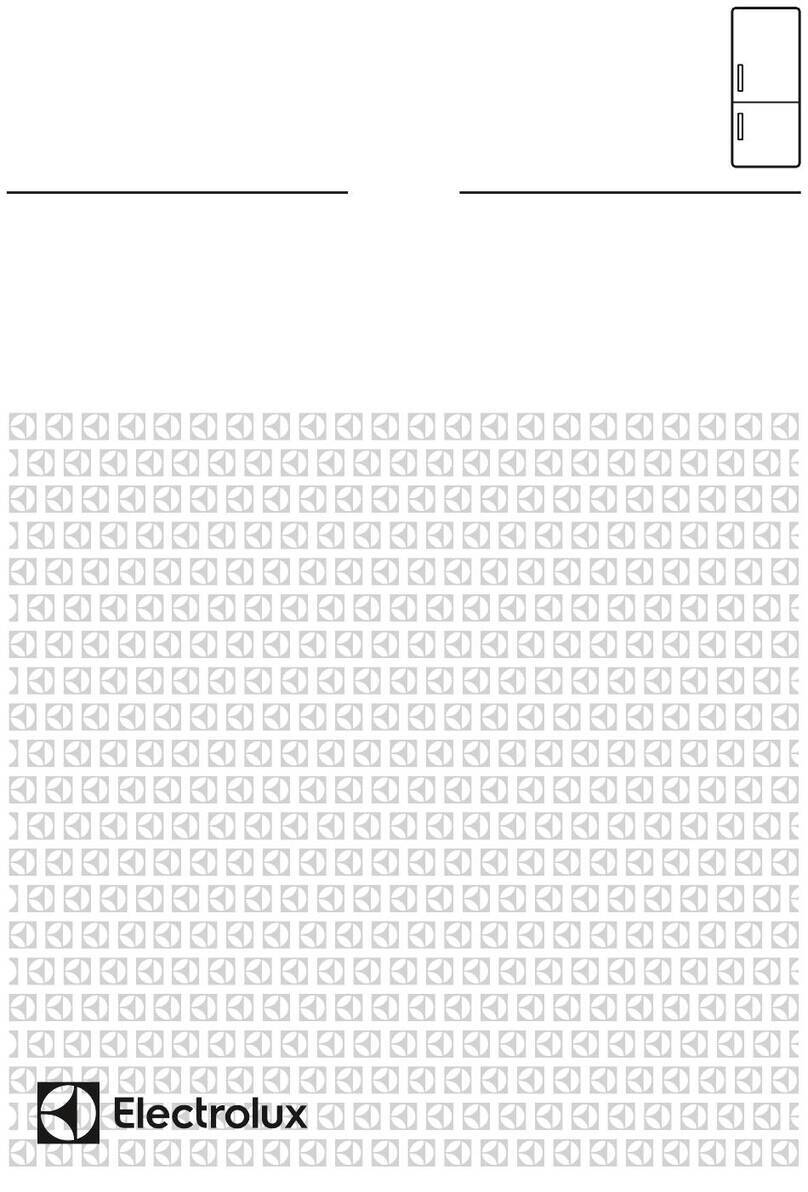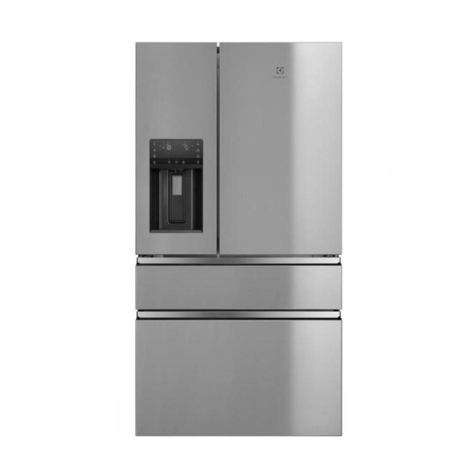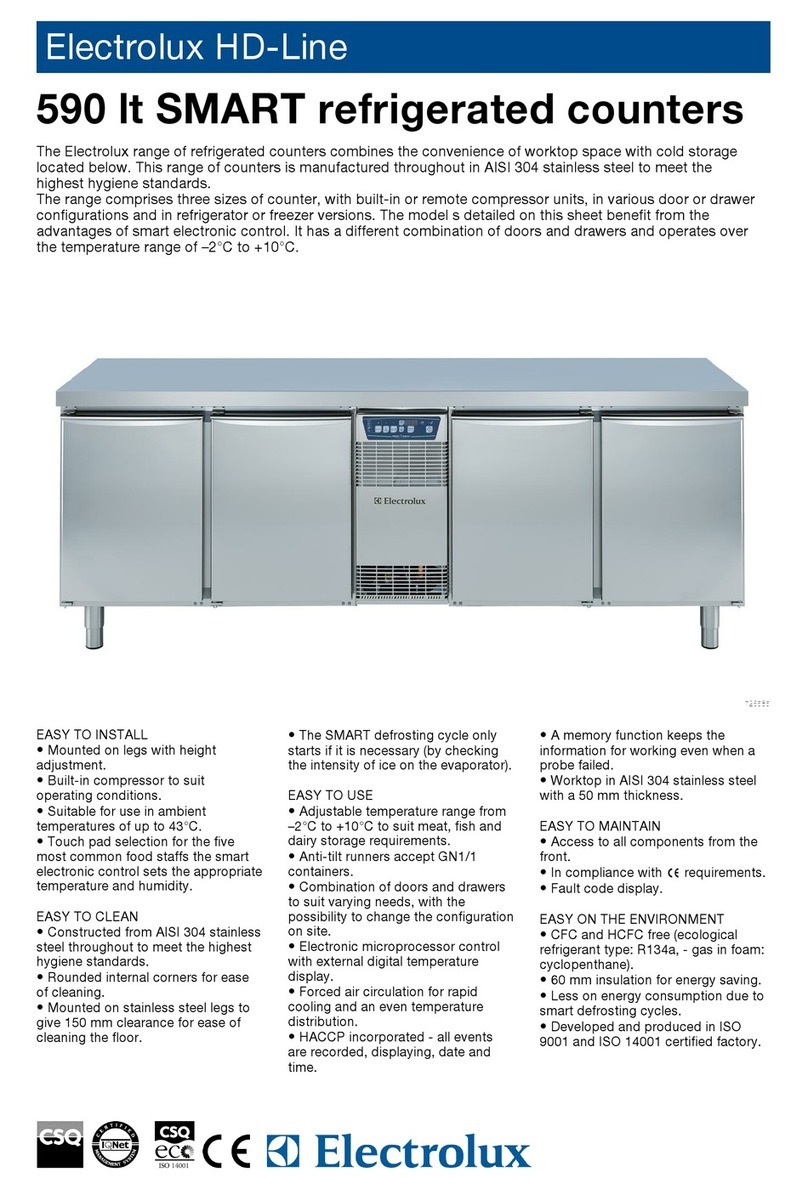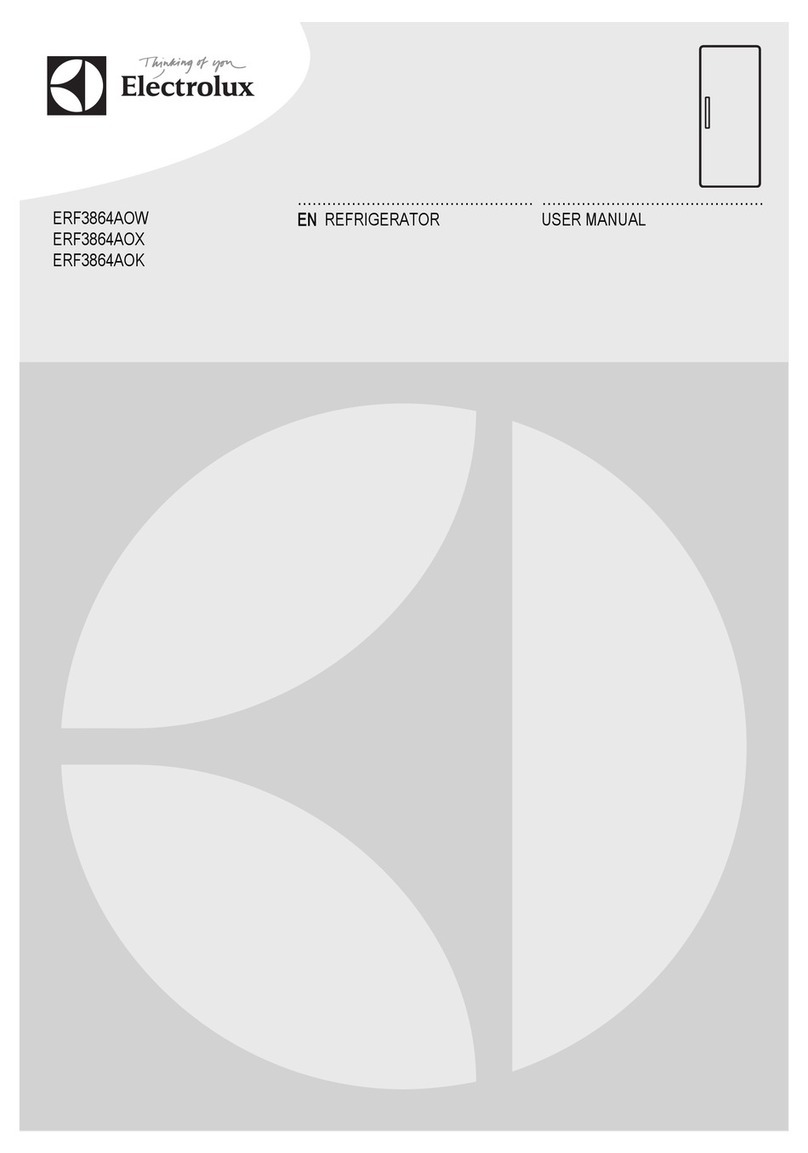9
HINTS AND TIPS
Normal Operating Sounds
• You may hear faint ur lin or bubblin sounds
when the refri erant is pumped throu h the coils
or tubin at the rear, to the coolin
plate/evaporator.
• When the compressor is on, the refri erant is
bein pumped round, and you will hear a whirrin
sound or pulsatin noise from the compressor.
• A thermostat controls the compressor, and you
will hear a faint ’click’ when the thermostat cuts in
and out.
Food Storage
To obtain the best performance from your frid e-
freezer
• Do not store warm food or evaporatin liquids.
• Avoid buyin frozen food if you cannot store it
strai ht away. The use of an insulated container is
advisable. When you arrive home place the frozen
food in the freezer immediately.
• Keep the time between buyin chilled food and
placin it in your refri erator as short as possible.
• Do not push food to ether too much, try to allow
air to circulate around each item.
• Do not store food uncovered.
• Ensure that food placed in the freezer is dated
and labelled and used in date order to ensure
that food is consumed at its best.
• Remove suspect food from your refri erator and
clean, refer to Maintenance and Cleanin .
• Lean food keeps better and lon er than fatty food,
salt reduces the stora e time.
• Wrap the food in polythene or aluminium freezin
ba s or foil so that they adhere to the food and
provide an airti ht seal .
• Packa in which is swollen or has traces of
refrozen water droplets on the pack could indicate
that the product has not been kept at a suitable
temperature and that it may have lost its ori inal
quality. Partially thawed food must not be
refrozen, it must be consumed within 24 hours.
Never exceed the stora e times indicated by the
manufacturer.
• The symbols on the drawers show different types
of frozen oods.
The numbers indicate stora e times in months for
the appropriate types of frozen oods. Whether
the upper or lower value of the indicated stora e
time is valid depends on the quality of the foods
and pre-treatin before freezin .
Energy Saving Advice
• Do not install the appliance close to sources of
heat, such as a boiler or radiator.
• Locate the appliance in a cool well ventilated
room and make sure that the air openin s of the
appliance are not obstructed.
• Avoid unnecessary frostin in the cabinet by
packin all foodstuffs into airti ht packa es
before placin them in the freezer.
• Always leave warm food to cool down to room
temperature before placin in the frid e.
• Food which is to be frozen (when cool) should be
placed in the frid e before bein transferred to
the freezer.
• Thaw frozen food in the frid e. This will ensure
safer defrostin of foods and reduce the work of
the refri eration unit.
• Try to avoid keepin the door open for lon
periods or openin the door too frequently as
warm air will enter the cabinet and cause the
compressor to switch on unnecessarily often.
• Ensure there are no obstructions preventin the
door from closin properly.
In the Event o a Power Failure
If there is a power failure durin the stora e of frozen
foods, keep the door closed. If the temperature within
your freezer should rise, do not refreeze the food
without checkin its condition. The followin
uidelines should assist you:
Ice-cream: Once thawed should be discarded.
Fruits & Vegetables: If soft should be cooked and
used up.
Breads & Cakes: Can be refrozen without dan er.
Shell ish: Should be refri erated and used up
quickly.
Cooked Dishes: i. e. casseroles should be
refri erated and used up.
Large Pieces o Meat: Can be refrozen providin
there are still ice crystals remainin within them.
Small Joints: Should be cooked and can then be
refrozen as cooked dishes.
Chicken: Should also be cooked and refrozen as a
fresh dish.
12
SOMETHING NOT WORKING
Symptom
No power to the appliance
The li ht does not come on
The temperature in the frid e or freezer section is
too hi h
The freezer door will not open
The compressor(s) runs continuously
Excessive frost and ice has built up
Noise
Water under the salad bin
Solution
Check there is power at the socket.
Check there is not a power cut by checkin the
household li hts.
Check the fuse has not blown.
Ensure that the bulb is correctly fitted.
Replace the bulb if it has blown.
Check the door li ht switch is not jammed.
Check the thermostat control knob for the frid e or
freezer is turned to the correct settin relative to
ambient conditions.
Check the ambient temperature is within the
appliance’s operatin limits, please refer to the
installation section in this instruction book.
Relocate the appliance if necessary.
Has door just been opened? If so leave for a few
minutes to allow the air pressure to equalise.
Adjust the thermostat control knob to ive correct
temperature control. See “Settin the temperature”.
Check that the doors are closed.
Lar e quantities of food have recently been placed in
the cabinet and/or door is frequently opened.
Check that air ventilation is not obstructed.
Ensure the doors are not left open.
Check that nothin is preventin the doors from
closin .
Is the door asket intact and clean.
Has advised periodic defrostin been carried out.
Refer to normal operatin sounds.
Check the drain hole is not blocked. (see
Maintenance and Cleanin ).
Important: If you call out an en ineer to a fault listed below, or to repair a fault caused by incorrect use or
installation a char e will be made, even if the appliance is under uarantee.
Be ore contactin your local Service Force Centre, check the followin points:
If, after the above checks, there is still a fault, call your local Service Force Centre.
In- uarantee customers should ensure that the above checks have been made as the en ineer will make a
char e if the fault is not a mechanical or electrical breakdown.
Please note that proof of purchase is required for any in- uarantee service calls.
Check that the fast freeze function is not in use.

